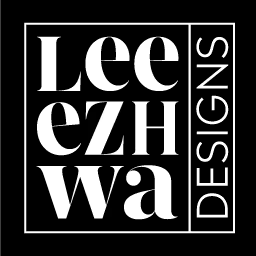The Fear Narrative is Wrong
Every few months, LinkedIn explodes with another “AI is killing design jobs” hot take.
You’ve seen the headlines:
- “AI will replace creative teams.”
- “Design is automated now.”
- “Why hire a designer when Midjourney does it in 5 seconds?”
Founders read these articles.
Investors forward them to their portfolio companies.
CMOs wonder if they should cut agency budgets.
The fear narrative is seductive.
And completely wrong.
AI Kills Lazy Design, not creative Leadership
AI isn’t replacing design.
It’s replacing mediocre design.
The designers who survive aren’t the ones who move pixels.
They’re the ones who move business outcomes.
AI gives us infinite design outputs.
But infinite options are useless without judgment.
- AI can generate layouts.
- AI can remix styleboards.
- AI can copy competitor color palettes.
But AI cannot:
- Understand your product positioning.
- Interpret your founder story.
- Simplify your business model into a 3-slide pitch.
- Build trust with investors or buyers.
Why Creative Direction Matters More than Ever
Let’s be clear:
- Design execution has been commoditized.
- Creative direction has been multiplied in value.
The role of the designer has shifted — permanently.
✅ AI is the engine.
✅ Creative directors are the drivers.
What creative direction really is:
- Translating business objectives into visual systems.
- Structuring investor narratives that persuade under pressure.
- Protecting brand consistency as AI floods content pipelines.
- Setting rules for AI to operate safely inside brand systems.
- Making tradeoffs when the design system and business strategy collide.
Creative direction is where design becomes business leverage.
Without it, you’re not running design — you’re just generating pictures.
AI Isn't Ready to Think For You
Let’s look at the numbers:
- ✅ McKinsey (2023): 80% of AI-generated design assets still require human strategic oversight before final use.
- ✅ IBM (2023): Poor AI prompt design increases downstream revision costs by up to 4x.
- ✅ MIT Sloan (2024): Hybrid human-AI teams outperform both fully automated and fully human design teams on creative projects by 38%.
AI generates.
Creative direction decides.
The people who confuse those two are the ones panicking right now.
Framework: My Model for AI-Assisted Creative Direction
For founders, CMOs, and agency owners wondering how to actually apply this, here’s the framework I follow with every client:
STEP 1: BUSINESS VISION BEFORE VISUALS
AI cannot set your market position.
We first clarify:
- Audience positioning
- Business objectives
- Founder story
- Go-to-market strategy
STEP 2: NARRATIVE STRUCTURE BEFORE STYLEBOARDS
Before AI touches anything visual, we structure:
- Brand narrative
- Investor positioning
- Product messaging hierarchy
STEP 3: DESIGN SYSTEMS BEFORE AI PROMPTS
- Build consistent design tokens (colors, type, hierarchy).
- Define what AI can touch (variations) and what it cannot (core identity).
- Create templates that AI operates within.
STEP 4: CREATIVE DIRECTION ON OUTPUT
- Evaluate AI options.
- Select viable directions.
- Adjust visual hierarchy.
- Protect voice, tone, and business relevance.
STEP 5: DELIVERY & GOVERNANCE
- Build scalable CMS structures (Webflow, Figma, Notion).
- Train client teams on maintaining brand systems.
- Audit AI-generated content for brand safety.
The Startup Who Almost Let AI Dilute their Fundraise
A founder client once came to me after trying to design their investor deck “with AI tools.”
What they had:
- Dozens of slide templates.
- Wildly inconsistent typefaces.
- Colors shifting slide by slide.
- No coherent story connecting product, revenue model, and team.
The investor feedback?
Confusing. Unfocused. Pass.
When I stepped in:
- We simplified their business story into 3 narrative arcs.
- Built a tight design system in Figma.
- Used AI only to generate background graphics that fit system rules.
- Delivered a polished Webflow-based investor site that matched the deck.
They closed a $3M seed round six weeks later.
Why This Matters to Founders, Investors and CMOs
- ✅ Founders: You need design that clarifies your story, not confuses it.
- ✅ Investors: You fund businesses that feel trustworthy — design drives perceived competence.
- ✅ CMOs: Your brand system is your growth infrastructure — AI without direction will fracture it.
- ✅ Agency owners: Your ability to provide creative leadership — not just production — is now your core value prop.
Actionable Takeaways
- Don’t outsource judgment to AI.
- Build brand systems first, then deploy AI safely inside them.
- Hire creative direction — not just design production.
- Make sure your designer speaks both business and creative fluently.
The Biggest Lie About AI in Design
AI doesn’t eliminate design leadership, it amplifies how expensive it is to not have any.
If you skip creative direction, AI simply multiplies your mistakes faster.
The winners aren’t designers who fear AI.
The winners are the ones who know how to direct it.
Still Hungry?
Don’t stop here. If this post lit a spark, you’ll want to dive into more ideas cut from the same cloth, sharper thinking, bolder design, and zero fluff.
The Day I Fired My “Inner Impostor Boss”
How ADHD magnifies impostor syndrome and what it takes to shut it down.
From Corporate Costume to Thin Creative Skin
Why hiding behind conformity kills originality and how authenticity is your new armor.
Permission Slips for Reinvention - Why no one else is going to hand you one.
Stop waiting for diplomas, managers, or permission... write your own slip.


